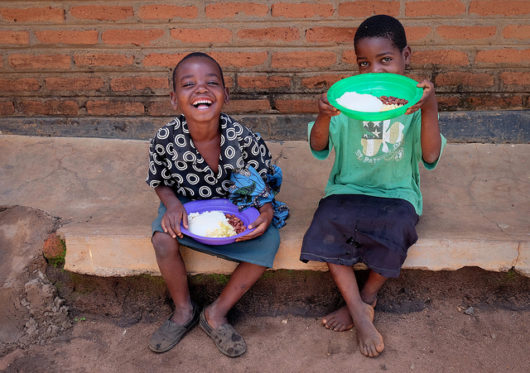TOP 10 FACTS ABOUT HUNGER IN MALAWI
 Malawi, a country in Southeast Africa with a population of about 21 million, is facing a severe crisis. Nearly half of its people are affected by hunger and food insecurity, while extreme poverty impacts two out of three Malawians.
Malawi, a country in Southeast Africa with a population of about 21 million, is facing a severe crisis. Nearly half of its people are affected by hunger and food insecurity, while extreme poverty impacts two out of three Malawians.
Top 10 Facts About Hunger in Malawi
- Food crisis– Malawi has been grappling with a food crisis in various forms for over a decade. Factors such as inflation, poverty, unemployment and natural disasters have significantly affected the country. It ranks among the top four countries in the world, with a very high percentage of the population living in extreme poverty.
- Unreliable weather patterns- Rural Malawians rely on smallholder farming for their livelihoods. By repeatedly cultivating small pieces of land, they aim to harvest enough food to sustain themselves and their families. However, over the last two decades, the country has faced natural disasters such as droughts, which have had a detrimental impact on farming. In 2024, the worst El Nino in a century devastated maize crops. 40% of the population is affected and needs immediate assistance.
- Unstable economy- Malawi’s economic conditions are quite challenging. High inflation rates have increased food prices, reaching 41% in May 2024. Since the economy heavily relies on agriculture, adverse developments in this sector have resulted in an unemployment rate of around 20%, pushing more people into poverty.
- Reduced production of Malawi’s staple food, Maize- Malawi has experienced unexpected weather trends that have adversely impacted its staple food, maize. Recent droughts have led to a shortfall of 600,000 metric tons between maize production and consumption, resulting in an emergency in the country. In June 2024, the price of maize increased by 23% compared to the previous month, making it even less affordable for millions of people in Malawi.
- Food import– Malawi is facing significant food security challenges and needs $447 million to import food, mainly maize, due to the severe effects of drought. Nearly half of the population is affected and struggles to access nutritious food. Although imports may temporarily relieve shortages, they could also drive up already high food prices, burdening households living in widespread poverty.
- Winter Cropping – Winter cropping allows farmers in Malawi to have two harvests per year, reducing the effects of climate change and weather and improving food security in the country. This approach enables small farmers to maintain a stable income and contributes to a reduction in food imports.
- Stunting in children under 5- Malawi has successfully decreased the stunting rate in children under 5 from 42% to 37%. However, the country still faces challenges, as 62,000 children are at risk of suffering from “severe acute malnutrition,” commonly known as wasting. Additionally, 64% of children under 5 suffer from anemia and 23% of all child fatalities are attributed to undernutrition, highlighting the critical state of child health in Malawi.
- Children’s education– The percentage of children completing primary and secondary school is alarmingly low, with only 33% finishing primary school and 23% completing secondary school. Factors such as poverty, food insecurity, and undernourishment contribute to the issue. Statistics reveal that 25% of students who drop out come from the lowest wealth quintile. Additionally, studies conducted by the World Food Program (WFP) indicate that children who are stunted or malnourished are more likely to drop out of school.
- Zero Hunger in Schools – The WFP supports education in Malawi by providing daily meals to 900 primary and nursery schools, benefitting approximately 1 million children. The meals are freshly prepared and the ingredients are sourced from local smallholder farms to support the local farmers. The WFP plans to provide emergency assistance to around 440,000 children in the current situation and aims to treat acute malnutrition in about 90,000 children.
- “Changing Lives“– The World Food Program (WFP) has launched a Rural Resilience Initiative that allows farmers to insure their crops against unexpected natural events through labor support. Additionally, the WFP provides training in climate-resilient agricultural techniques and works to ensure a continuous water supply for farmers. These efforts aim to reduce food insecurity and poverty in the country.
Final Comments
These facts show us the challenges faced by people in Malawi. However, in collaboration with the government, local and international organizations are working to promote sustainable farming practices and empower communities. These efforts offer hope for a future with reduced food insecurity in the country.
– Aquillina Ngowera and Maria Waleed
Photo: Flickr
Updated: November 11, 2024
